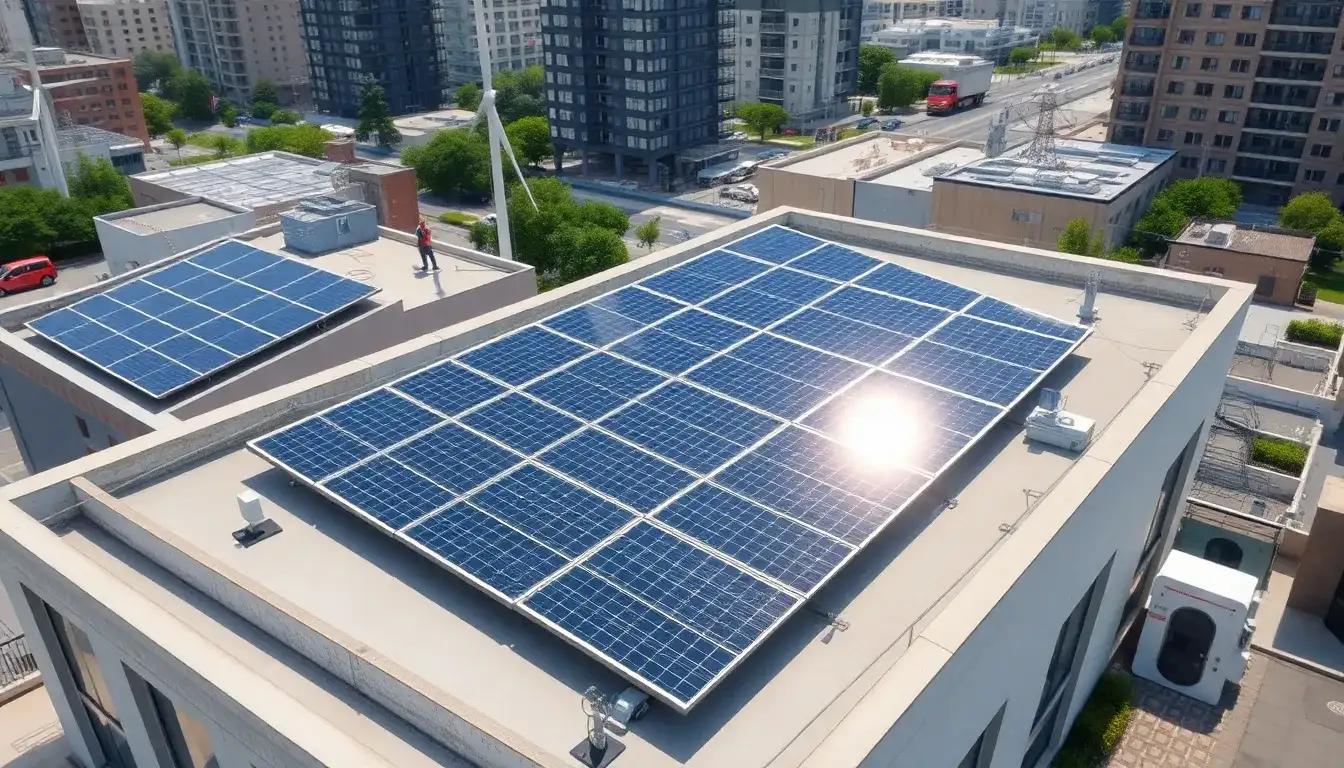
Solar panels are devices that convert sunlight into electricity using photovoltaic (PV) cells. These cells are made from materials that generate excited electrons when exposed to light. The flow of these electrons through a circuit produces direct current (DC) electricity, which can power various devices or be stored in batteries. Solar panels are also referred to as solar cell panels, solar electric panels, or PV modules. Typically, they are arranged in groups known as arrays or systems.
A photovoltaic system comprises one or more solar panels, an inverter that converts DC electricity into alternating current (AC) electricity, and sometimes additional components such as controllers, meters, and trackers. Most solar panels are installed in solar farms or on rooftops, supplying power to the electricity grid.
Advantages and Disadvantages
Solar panels offer numerous advantages, including utilizing a renewable and clean energy source, reducing greenhouse gas emissions, and lowering electricity bills. However, they also have some drawbacks, such as dependence on sunlight availability and intensity, the need for regular cleaning, and high initial costs. They are extensively used for residential, commercial, and industrial applications, as well as in space, often in conjunction with batteries.
History
The phenomenon of generating an electrical charge from light was first observed in 1839 by French physicist Edmond Becquerel. Although these early solar panels were too inefficient for practical use, they served as instruments to measure light. The replication of Becquerel’s work did not occur until 1873 when English engineer Willoughby Smith discovered that light striking selenium could generate a charge. This finding led to the publication of “The Action of Light on Selenium” by William Grylls Adams and Richard Evans Day in 1876.
In 1881, American inventor Charles Fritts created the first commercial solar panel, which was described as providing a continuous and strong electrical output, not only in direct sunlight but also in dim light. However, these panels were still inefficient compared to coal-fired plants. In 1939, Russell Ohl developed the solar cell design commonly used in modern panels, which was patented in 1941. The first commercially viable silicon solar cell was produced by Bell Labs in 1954.
The solar panel installation industry experienced significant growth between 2008 and 2013. Many installers faced challenges with less than ideal rooftop conditions, leading to the re-popularization of micro-inverters and the invention of power optimizers. By 2013, several solar panel manufacturers began shipping smart module solutions.
Theory and Construction
Photovoltaic modules are composed of numerous solar cells that harness light energy (photons) from the Sun to generate electricity through the photovoltaic effect. Most modules utilize wafer-based crystalline silicon cells or thin-film cells. The components of a module are designed to protect the cells from mechanical damage and moisture. Modules usually connect cells in series to achieve the desired voltage and in parallel to increase current.
A PV junction box is attached to the back of the solar panel, serving as its output interface. External connections typically utilize MC4 connectors for reliable weatherproof connections. Solar panels are also supported by metal frames consisting of various racking components.
Efficiency
Solar panel efficiency is determined by the area required to produce a certain output power. For example, an 8% efficient 230 W module will occupy twice the area of a 16% efficient one. Commercially available solar modules can exceed 24% efficiency. The highest recorded sunlight conversion rate is around 21.5% in new commercial products.
Performance and Degradation
Solar module performance is rated under standard test conditions, which may differ from real-world conditions. The actual output varies based on factors like geographic location, time of day, and weather. Typical degradation rates for crystalline silicon modules range between 0.8% and 1.0% per year. In contrast, thin-film photovoltaic modules initially experience significant degradation, stabilizing over time.
Maintenance
Solar panels can lose efficiency due to the accumulation of dust and debris, which can reduce energy output by up to 30% in certain environments. Regular cleaning is often recommended, especially in regions with high dust levels. The efficiency of solar panels can be negatively impacted by environmental conditions such as temperature and shading.
Waste and Recycling
In 2021, global photovoltaic waste reached 30,000 tonnes, with estimates predicting over 1 million tonnes annually by 2035. Currently, around 90% of decommissioned solar panels in the United States end up in landfills. However, many components of solar modules, including up to 95% of certain semiconductor materials, glass, and metals, can be recycled. European legislation mandates that manufacturers ensure proper recycling of their solar panels, a trend that is gaining traction in other countries as well.
Production and Price
The production of photovoltaic systems has followed a learning curve effect, with significant cost reductions accompanying increases in efficiency and output. Prices have steadily declined, with solar electricity often becoming cheaper than fossil fuel options since 2012. Swanson’s law states that solar module prices have dropped about 20% for each doubling of installed capacity.
Applications
Solar panels have diverse applications, including agricultural power for irrigation, healthcare for refrigerating medical supplies, and various infrastructure uses. They are utilized in photovoltaic power stations, rooftop systems, solar-powered vehicles, and even in space.
Limitations
As rooftop photovoltaic systems become more common, challenges arise with the traditional electricity grid, which is not designed for two-way energy transfer. This can lead to technical issues such as over-voltage. Solutions are available, but they often come with limitations and costs.
Quality Assurance
Quality assurance for solar modules involves extensive testing to ensure they meet performance standards and have a long service life. This includes various stages of testing throughout their lifecycle, from design verification to in-service evaluation.
In summary, solar panels represent a vital component of the transition to renewable energy, combining efficiency, evolving technology, and environmental benefits while facing challenges in installation, maintenance, and end-of-life management.
Original article by NenPower, If reposted, please credit the source: https://nenpower.com/blog/understanding-solar-panels-technology-applications-and-challenges/


